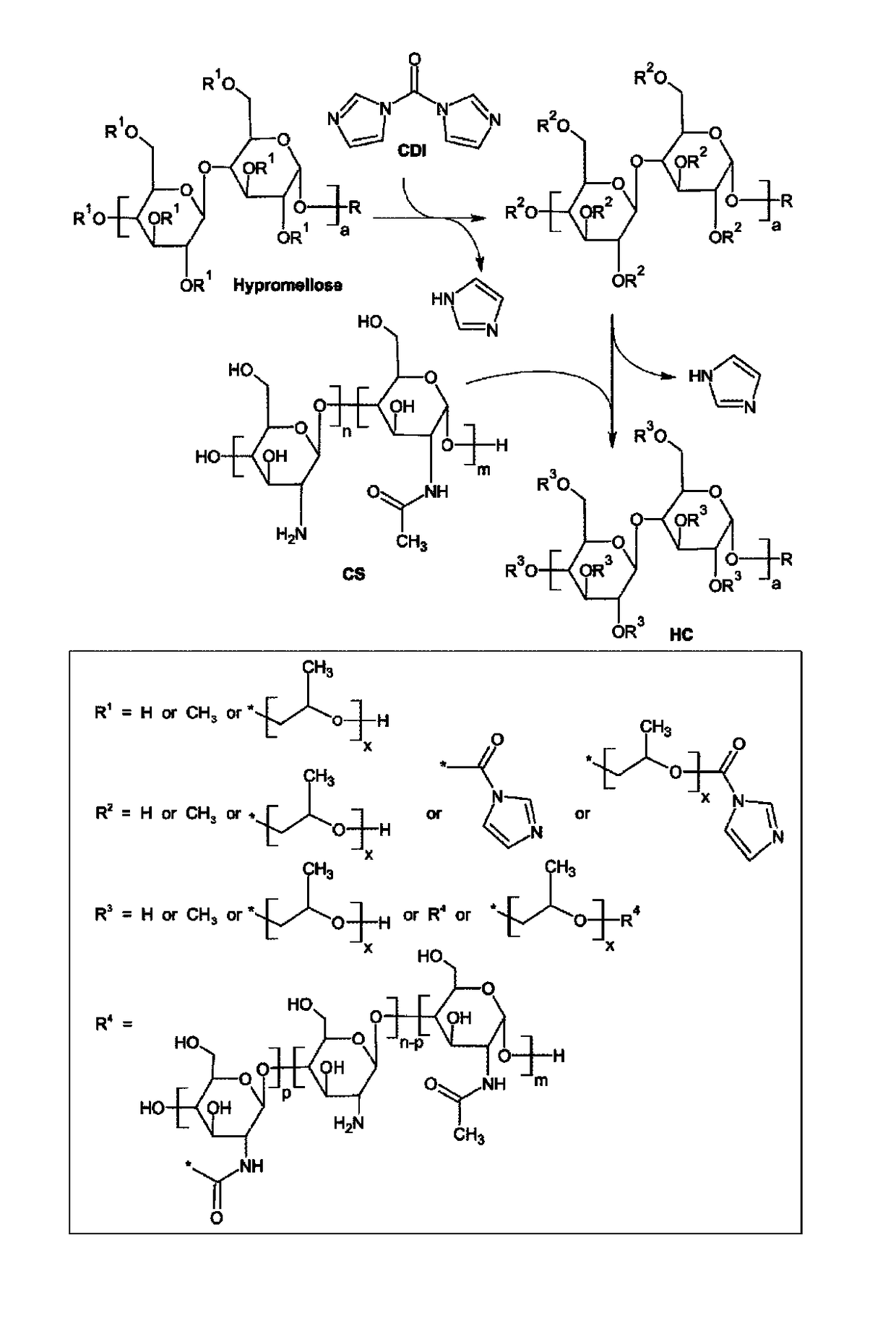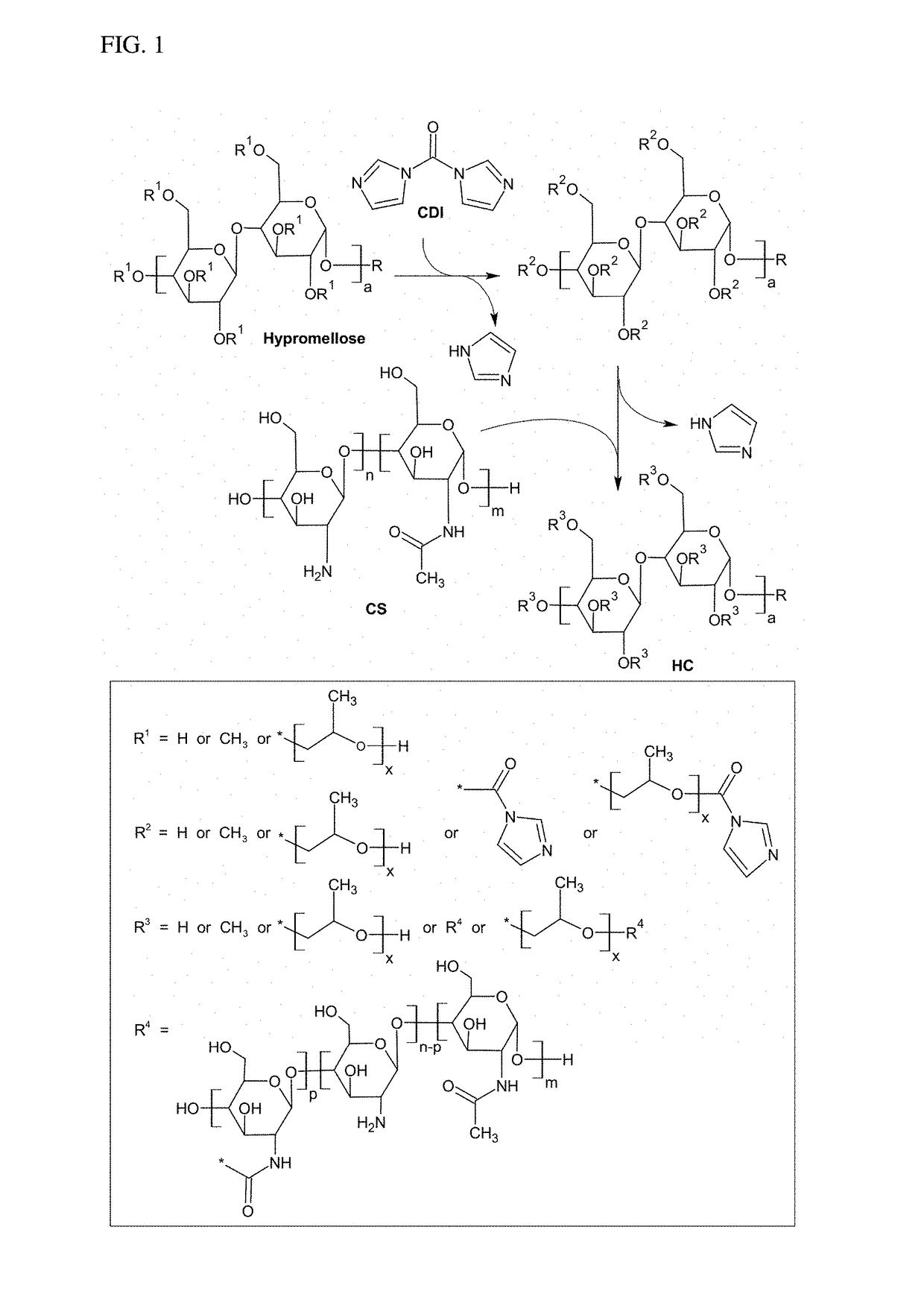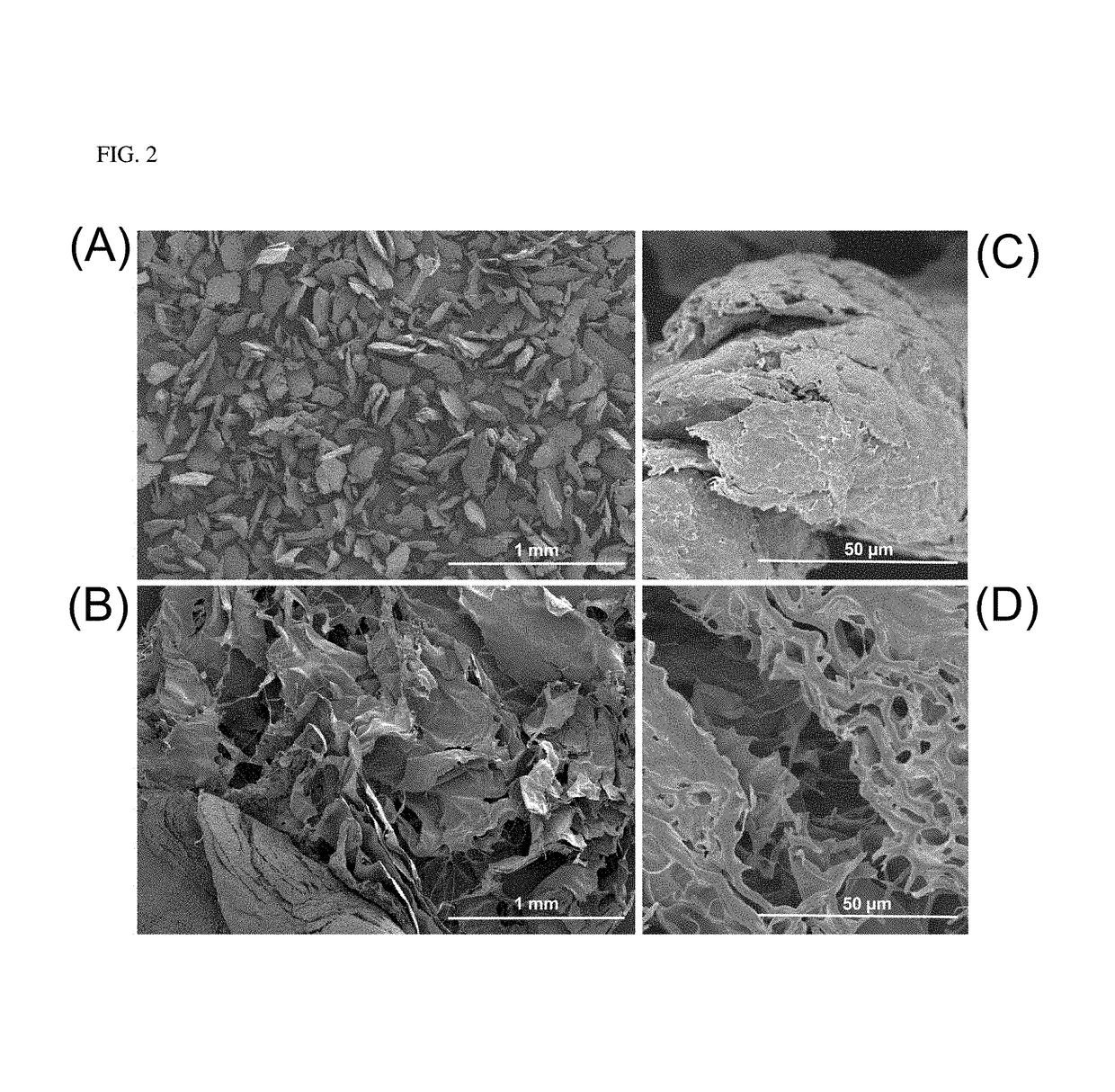Hypromellose-graft-chitosan and methods thereof for sustained drug delivery
a technology of hypromellose graft and chitosan, which is applied in the direction of prosthesis, bandage, tetracycline active ingredients, etc., can solve the problems of slowing down of drug bioavailability, low drug encapsulation efficiency, and high current drug delivery applications of cs, so as to drug release sustainability, and improve drug encapsulation efficiency. , the effect of improving the efficiency of encapsul
- Summary
- Abstract
- Description
- Claims
- Application Information
AI Technical Summary
Benefits of technology
Problems solved by technology
Method used
Image
Examples
Embodiment Construction
[0039]In the following detailed description, numerous specific details are set forth to provide a thorough understanding of claimed subject matter. However, it will be understood by those skilled in the art that claimed subject matter may be practiced without these specific details. In other instances, methods, apparatuses, or systems that would be known by one of ordinary skill have not been described in detail so as not to obscure claimed subject matter. It is to be understood that particular features, structures, or characteristics described may be combined in various ways in one or more implementations.
[0040]Chitosan (CS) is a biocompatible, slowly biodegradable and non-toxic biopolymer that are used as a carrier for controlled drug release. However, CS is hydrophobic, which together with CS's low drug encapsulation capacity, limits drug release sustainability. Moreover, the processing and wide pharmaceutical uses of CS require acidic media for dissolution and thereby fail to de...
PUM
| Property | Measurement | Unit |
|---|---|---|
| concentrations | aaaaa | aaaaa |
| molecular weight | aaaaa | aaaaa |
| molecular weight | aaaaa | aaaaa |
Abstract
Description
Claims
Application Information
 Login to View More
Login to View More - R&D
- Intellectual Property
- Life Sciences
- Materials
- Tech Scout
- Unparalleled Data Quality
- Higher Quality Content
- 60% Fewer Hallucinations
Browse by: Latest US Patents, China's latest patents, Technical Efficacy Thesaurus, Application Domain, Technology Topic, Popular Technical Reports.
© 2025 PatSnap. All rights reserved.Legal|Privacy policy|Modern Slavery Act Transparency Statement|Sitemap|About US| Contact US: help@patsnap.com



